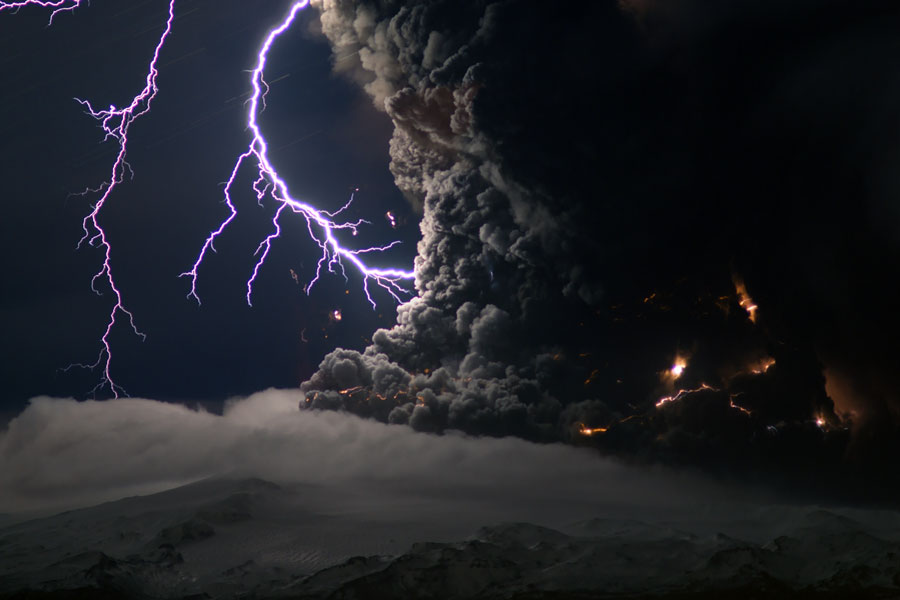- Chemosynthetic origins - The chemicals of life were made on Earth. Once made, these eventually combined to make living organisms.
- Panspermia - The chemicals of life and/or life was seeded from asteroids and meteorites from space.
Lets start with chemosynthesis.
Looking at the Earth 3.8 billion years ago, it was thought to be highly volcanic, anoxic and had liquid water. Lightning storms were thought to be frequent around erupting volcanoes (as they are today). The surface of the planet was being bombarded with radiation as there was no ozone layer formed. The atmosphere was thought to be made up of simple molecules.

It was proposed that the energy of any of the above sources could have been used to break and reform chemical bond, thus turning the simple molecules of the atmosphere into more complex ones. There will be some description about the experiments involved in this later.
Panspermia describes the idea that complex molecules form in space. Many dust clouds in space contain carbon, nitrogen and water (ice crystals) in them. In addition asteroids and comets contain these elements as well. Energized by radiation from the stars the chemical bonds can be rearranged to form complex materials some of which are found on Earth.

The conditions thought to occur in deep space have been modeled in Earth labs and so this theory is plausible as well. If we find life of a similar chemical make up on other Earth-like planets, it may be that Panspermia becomes the preferred model. Given what we currently know, it appears that the chemosynthetic origins of life is still favoured. The experiment that got the ball rolling on this was the Urey-Miller experiment performed in 1953. This is the subject of the next post.
No comments:
Post a Comment